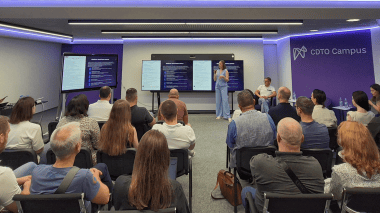- Direction:
- GovTech
No Vendor Lock-in, Full Digitalization: Ukraine Resets Its GovTech Rules
- Publication date and time:
- Reading time:
- 2 min

On July 15, 2025, Ukraine approved new rules for building and running public digital systems. The update covers the full lifecycle of government IT projects — from planning and development to operation and modernization — and is seen as a major step toward EU standards and a more open digital market.
What’s new?
The reforms simplify the state’s approach to GovTech and bring it closer to international practice. Key changes include:
- Less bureaucracy. Only two documents are now needed to launch a project — technical requirements and terms of reference.
- Goodbye to Soviet legacy. Ukraine is moving from outdated national norms to ISO and IEEE standards, ensuring better quality and interoperability.
- Modern cybersecurity. Rigid Soviet-style protection models have been replaced with flexible, risk-based information security systems.
- Digital by default. Documentation can be fully electronic, with priority given to open-source and cloud solutions.
- No vendor lock-in. Royalty-based licensing for government services is banned, creating fairer competition in the digital market.

How were the rules developed?
Since March 2025, cross-sectoral working groups under the Digital Competence Center (DCC) of the Ministry of Digital Transformation — coordinated by the state-owned enterprise «Diia» — have worked on the updated regulation. With support from the European Union through the DT4UA project, implemented by the e-Governance Academy (eGA), and with the involvement of the GovTech Alliance of Ukraine (GTA UA), a series of consultations were held with government officials, IT businesses, civil society, and international partners. Nearly 200 participants joined the public launch event in August, underlining strong interest from the GovTech community.
The GovTech community had been waiting for rules that not only exist on paper but actually work in practice. The presentation of the updated requirements brought together nearly 200 participants — a clear sign that setting rules and updating standards in GovTech is truly important for ecosystem stakeholders

What’s next?
Ukraine now plans to develop practical guidelines, templates, and methodologies to help state institutions and developers apply the new standards effectively.
It’s not enough to abandon outdated Soviet-era norms — we must embrace openness. This is a long-term process, but it’s the foundation for a transparent and competitive GovTech market in Ukraine.
The reform is part of Ukraine’s broader digital transformation, aligning national legislation with EU standards while creating the conditions for innovation, trust, and a stronger digital economy.
The article was prepared by the GovTech Alliance of Ukraine (GTA UA).


